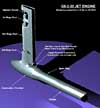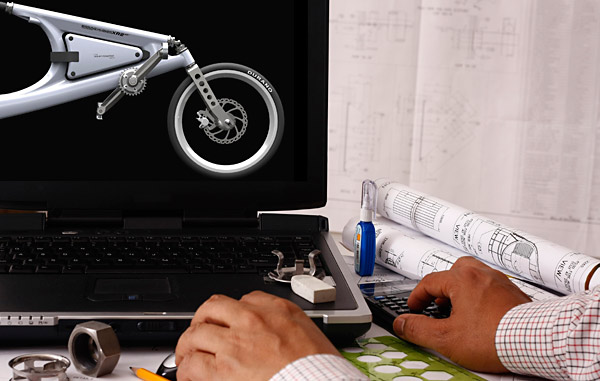By
Robert Q. Riley
Having done product design and development the old fashioned way, there's nothing like today's 3D CAD technologies and modern computer-driven fabrication. They visualize the finished product just as it will appear in real life without what we used to call the "artistic license" of concept renderings. And with various computer controlled fabrication processes, it's far quicker and easier to go from a design to a real world product.
Unfortunately, these cutting-edge technologies have yet to reach the home workshop. But we're in the process of changing that. It serves no purpose to just add a layer of technical glitz to a project. The goal is to make your project easier, quicker and better - and more fun too. Our 30-year history of developing DIY projects, many of which have carried the logos of publications like Popular Mechanics Magazine, has been essential to creating the right mix of modern technologies for the home craftsman; people who may not be familiar with CAD systems. If you found your way here, you have enough computer skills to use these modern technologies. It's easy.
Computer-Driven Fabrication
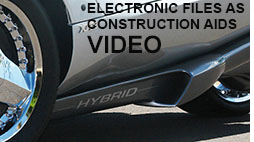 The home craftsman may not be able to take advantage of all the advanced technologies used by product development firms. But he/she can use many of them, provided they have the right electronic files and know which vendors to contact. You'll find the correct files and links to vendors in our electronic presentations (containing 3D CAD fiiles). Using these electronic files you can take advantage of 3D printing, CNC machining, water jet cutting, computer-driven tube bending, and various other state of the art fabrication technologies. Essentially, we are pioneering a new way of seeing and doing for the home craftsman. The home craftsman may not be able to take advantage of all the advanced technologies used by product development firms. But he/she can use many of them, provided they have the right electronic files and know which vendors to contact. You'll find the correct files and links to vendors in our electronic presentations (containing 3D CAD fiiles). Using these electronic files you can take advantage of 3D printing, CNC machining, water jet cutting, computer-driven tube bending, and various other state of the art fabrication technologies. Essentially, we are pioneering a new way of seeing and doing for the home craftsman.
Water Jet Cutting
Water jet cutting is a technology wherein a high-speed jet of water is used to cut through metal and create parts that are blanked out according to a computer file. You can get parts professionally cut to shape for little more than the price of the material alone (always use the vendor's material). The key to getting a good price is to supply the DXF files used to guide the water jet head (or plasma cutter). You'll find these DXF files on the disc (or in the plans packet), along with a link to a vendor that will do the cutting and ship the parts to your doorstep. Without the correct electronic files, you'd have to pay to have the vendor create them, or grab a hacksaw and cut it out yourself.
Self-Adhesive Decals
Logos and other trim elements can make the difference between a product that looks home-made and one that looks like a production product. We provide, as part of the plans, the correct computer files and links to vendors that'll do the job. You end up with professionally designed and manufactured decals, just like those used on production products. Decals produced this way are relatively inexpensive, as long as you supply the electronic files.
CNC Machining
The term "CNC" is an acronym for "Computer Numerical Control". It simply means that the mill is driven by a computer file, normally a 3D file, to automatically machine a part from metal, plastic, or even rigid foam. When a part is CNC machined from a computer file it precisely matches the size and shape of the part you see on your monitor. This saves on machine time and expense, and it also results in a nicer looking part. The correct files for CNC machining are included.
3D Printing
Although much has been written about 3D printing, normally a home craftsman will not use this technology due to the expense. But it's possible to do 3D printing with the our electronic 3D CAD files. There are a number of different 3D printing technologies, but I'll explain the SLA and FDM processes. SLA parts use a special resin. The resulting parts are cosmetically correct but they cannot stand up to much abuse. They can, however, be used as patterns to make silicone rubber molds into which urethane resin can be poured and cured, often using an autoclave. Parts molded this way are significantly stronger, close to the strength of a conventionally ja manufactured part. If you are making a single part, however, CNC machining may be a better option.
The other technology is Fused Deposition Modeling (FDM). Normally FDM parts are made of ABS plastic and reach about 90 percent of the strength of an injection-molded ABS part. Plastic is melted and deposited in layers. Envision the head as similar to a hot-melt glue gun, except the tip is much finer and it's guided by computer files. You can use an FDM part as though it were a manufactured item. The drawback is that FDM parts have resolution lines that produce "stair-stepping", which is similar to the pixelation in a digital image that's been enlarge too much. But the vendor can increase the resolution of the FDM replication to minimize the effect. Your plan-set includes the necessary files for either process (or for any 3D printing process), but the parts tend to be costly.
3D CAD-Accurate Electronic Models, Plus Traditional Drawings
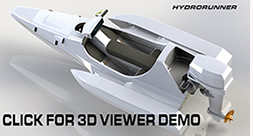 Never again will a DIY enthusiast have trouble understanding printed plans. You can view, zoom, and rotate a 3D electronic model on your own computer. You can isolate a single part, see it from any angle, and even zoom inside to see how it's built from the inside out. And since the 3D models are full-size and CAD-accurate, you can take precise measurements directly from the electronic model, and see exactly how each part fits together - all in three-dimensional space. In addition, the 2D drawings provide complete dimensions in traditional drafting format. Users can view the drawings, zoom in on a part for a close-up look, and print out a particular view using an ordinary printer. All the necessary software is free and no prior knowledge of CAD systems is needed.
Click the image above to see a demonstration of how to use a free viewer to view details that old fashioned printed plans cannot show. Never again will a DIY enthusiast have trouble understanding printed plans. You can view, zoom, and rotate a 3D electronic model on your own computer. You can isolate a single part, see it from any angle, and even zoom inside to see how it's built from the inside out. And since the 3D models are full-size and CAD-accurate, you can take precise measurements directly from the electronic model, and see exactly how each part fits together - all in three-dimensional space. In addition, the 2D drawings provide complete dimensions in traditional drafting format. Users can view the drawings, zoom in on a part for a close-up look, and print out a particular view using an ordinary printer. All the necessary software is free and no prior knowledge of CAD systems is needed.
Click the image above to see a demonstration of how to use a free viewer to view details that old fashioned printed plans cannot show.
The construction manual is formatted just like a web site. The easy-to-navigate construction manual lets users see precisely how each item is built. High-resolution photos that expand to fill your monitor, renderings, and drawings show how it's done from beginning to end. Technical information, specifications, a materials list, and links to vendors on the Internet are also included.
The Fun Way to Learn
DIY enthusiasts get the benefits of the latest CAD technologies without having to learn CAD or 3D modeling software. They'll gain firsthand knowledge of how CAD systems work and the benefits they deliver as they build their projects. Learning happens naturally as a fringe benefit. And if you have a youngster in the house, there's no better way to get them excited about the power of computer aided design. By doing a family project you may be giving your youngster a gift that will last a lifetime.
Project-Based Learning
Project-based learning is based on the idea that when you put knowledge into practice you learn it in a way that just does not happen with book-learning. Entirely cerebral learning can be dry and uninteresting to students. But when you introduce it in the form of a project that stimulates enthusiasm, resistance to learning can suddenly transform into an exciting real-world experience. Youngsters can quickly embrace entreprenuerial and funding skills, plus mathematical, engineering, and CAD skills in a way that may not happen in the traditional learning environment. And an aspect that's often ignored is the idea of teaching self-esteem and that can-do spirit. In its best and most fully expressed form, it's the spirit of the Wright Brothers that led them to their conquest of the air. We did not invent project-based learning, but we are taking it a step further.
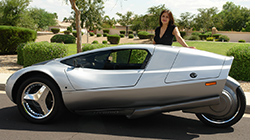 This document explains it from the perspective of a professor at Bioscience High School in Phoenix, Arizona, where they have made our XR3 Hybrid the centerpiece of a schoolwide learning experience on sustainable energy. Bio Science High School's project-based learning program. This document explains it from the perspective of a professor at Bioscience High School in Phoenix, Arizona, where they have made our XR3 Hybrid the centerpiece of a schoolwide learning experience on sustainable energy. Bio Science High School's project-based learning program.
|


